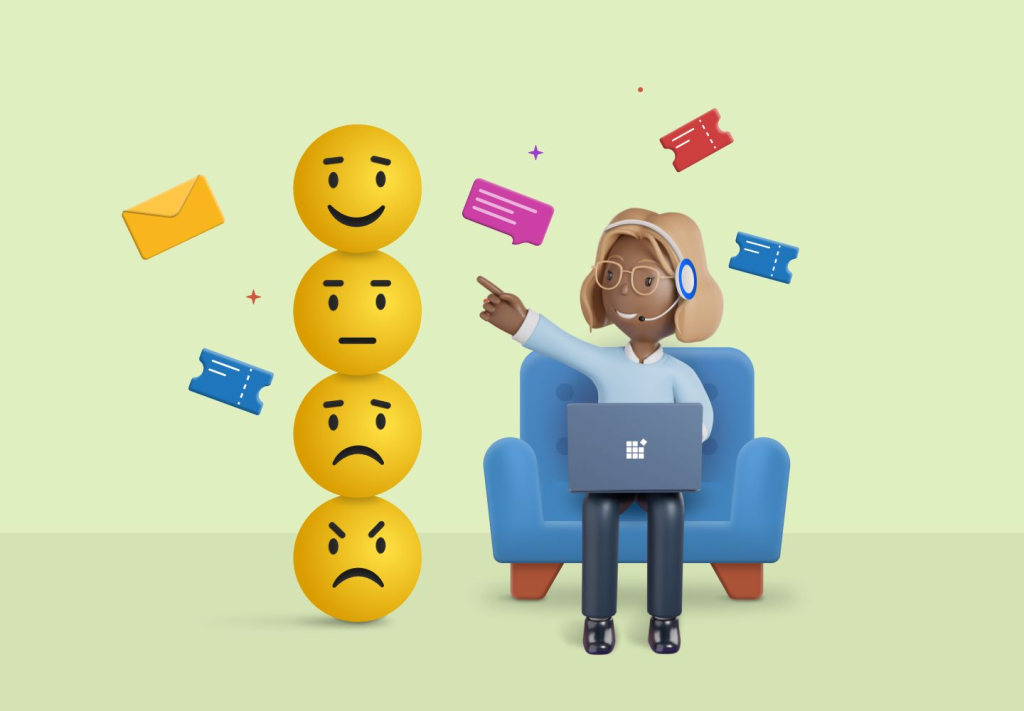As Marketing Manager, Molly Palmer, I’ve learned that customer complaints, while initially frustrating, are invaluable opportunities for growth. They’re not just problems to be solved. They’re a direct line to understanding customer needs and improving our products and services. This guide outlines a comprehensive approach to complaint handling, transforming challenges into positive outcomes that strengthen our brand and foster customer loyalty.

Understanding the Value of Complaints
Many businesses view complaints as negative, focusing solely on damage control. However, a complaint is essentially free market research. It provides direct feedback on what’s working and, more importantly, what isn’t. A customer taking the time to voice their dissatisfaction indicates they care enough to share their experience. Ignoring this valuable insight is a missed opportunity for improvement.
10 Practical Tips to Boost Your Online Customer Service
Creating a Complaint-Friendly Environment
The first step in effective complaint handling is making it easy for customers to voice their concerns. This involves:
- Multiple Channels: Offering various avenues for complaints – phone, email, online forms, social media – ensures accessibility for all customers.
- Clear and Concise Process: A simple, straightforward process eliminates confusion and encourages timely reporting. Avoid overly complex or legalistic language.
- Prompt Acknowledgement: A quick acknowledgement of the complaint shows the customer their feedback is valued and that action will be taken. A simple “Thank you for contacting us; we’re looking into this immediately” goes a long way.
The Seven-Step Process for Handling Complaints
My team and I follow a seven-step process designed to address complaints effectively and efficiently:
- Listen Actively and Empathize: Begin by actively listening to the customer’s complaint without interruption. Show empathy and understanding, acknowledging their frustration. Phrases like, “I understand your frustration,” or “I can see why you’re upset,” demonstrate genuine concern.
- Apologize Sincerely: Even if the customer’s complaint isn’t entirely our fault, a sincere apology for the inconvenience is crucial. Avoid making excuses; focus on acknowledging their negative experience.
- Take Ownership: Avoid blaming other departments or individuals. Accept responsibility for resolving the issue. This demonstrates accountability and professionalism.
- Investigate Thoroughly: Gather all necessary information to understand the root cause of the complaint. This might involve reviewing internal records, speaking with relevant team members, or even conducting further research.
- Develop a Solution: Propose a fair and reasonable solution to address the customer’s concerns. This may involve a refund, replacement, repair, or other appropriate action. The aim is to exceed expectations whenever possible.
- Communicate Clearly and Promptly: Keep the customer updated on the progress of their complaint. Provide timely and transparent communication, explaining the steps taken and the expected timeline for resolution.
- Follow Up: Once the issue is resolved, follow up with the customer to ensure their satisfaction. This demonstrates a commitment to customer care and encourages loyalty. A simple thank-you note or email can make a significant difference.

Turning Complaints into Opportunities
Effective complaint handling goes beyond merely resolving the immediate issue. It’s about leveraging the feedback to improve our processes and prevent similar problems in the future.
- Analyze Trends: Regularly analyze complaints to identify recurring issues. This allows us to pinpoint areas needing improvement within our products, services, or internal processes. For example, a recurring complaint about shipping delays might indicate the need for a new logistics provider.
- Implement Changes: Based on the analysis, implement necessary changes to address the root causes of complaints. This could involve improving product quality, refining customer service procedures, or updating internal systems.
- Gather Testimonials: In some cases, a well-handled complaint can lead to a positive testimonial. Customers who feel their concerns were addressed fairly and efficiently are often willing to share their positive experience.
Training and Empowerment
Equipping our team with the skills and authority to handle complaints effectively is essential. This involves providing training on active listening, empathy, conflict resolution, and our company’s complaint-handling procedures. Empowering employees to resolve issues independently speeds up the process and improves customer satisfaction.
Measuring Success
It’s crucial to track key metrics to assess the effectiveness of our complaint-handling strategy. This includes:
- Resolution Time: The time it takes to resolve a complaint.
- Customer Satisfaction: Measuring customer satisfaction after the complaint is resolved.
- Recurring Complaints: Tracking the frequency of recurring complaints to identify persistent issues.
By continuously monitoring these metrics, we can identify areas for improvement and refine our processes to enhance customer satisfaction and drive business growth.

In conclusion, complaint handling isn’t simply about fixing problems; it’s about transforming challenges into opportunities for learning, growth, and strengthening customer relationships. By embracing complaints as valuable feedback and implementing a well-defined process, we can turn negative experiences into positive outcomes, ultimately fostering loyalty and driving business success.





